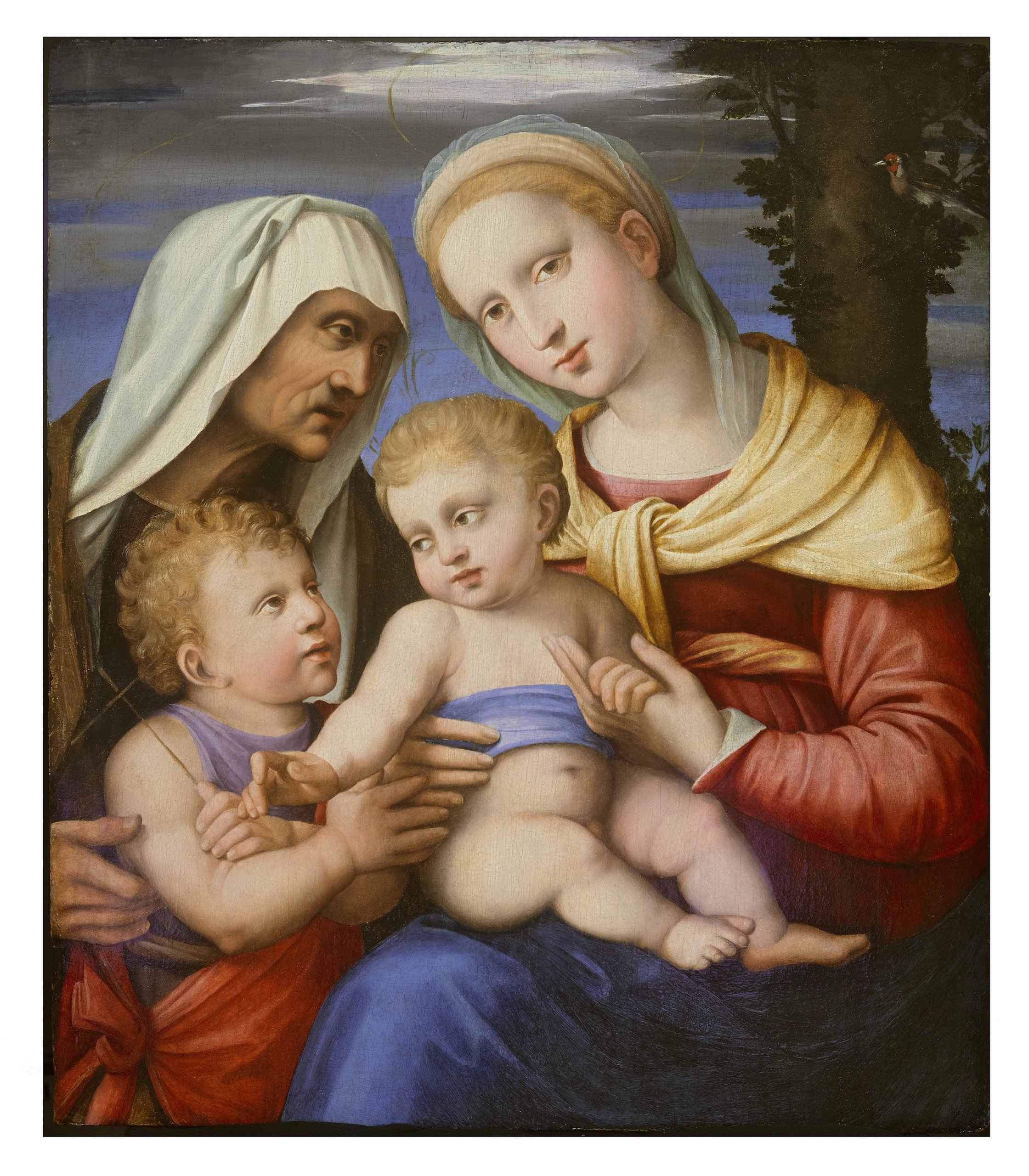
Stumbling upon a lost masterpiece is the great fantasy of amateur collectors. For Anthony Ayers, proving that the painting he purchased in 1995 at a quaint English antiques shop was the work of a Renaissance maestro became something of an obsession, one that nearly 30 years later has reached a conclusion—well, maybe.
The subject matter of the Flaget Madonna was commonplace enough for a 16th-century panel painting: A serene Mary holding an infant Jesus with the accompanying presence of Elizabeth and John the Baptist. But something about the brushwork and painting’s aura convinced Ayers it was the work of Raphael, the Italian Renaissance master to whom a mere 200 paintings are attributed.
He duly encouraged friends to help him fund research into the painting. To date, more than $500,000 has been spent hiring specialists to analyze the paints and wooden panels, and recently, working with Art Recognition, an award-winning A.I. system for art authentication.
Detail of “Flaget Madonna,” Courtesy Flaget Madonna LLC.
Beyond being a passion project for Ayers and his supporters, it stands as a potentially lucrative gamble given the last Raphael work to sell at auction, a sketch titled Head of a Muse, netted $48 million in 2009. In today’s market, Ayers’s “Raphael,” if authenticated, would likely fetch hundreds of millions. Unfortunately, he won’t ever see that happen; he died earlier this year.
For some, the findings of Art Recognition, a Zurich-based company, offer the most supportive evidence so far. After building a dataset comprised of all Raphael’s authenticated paintings and comparing them against similar and contemporary works, the system learned to identify brushstrokes and color variations specific to the “School of Athens” painter. It concluded the faces of the Madonna and Jesus were 96 percent attributable to Raphael with the figures of John and Elizabeth, the background, and the drapery likely completed by his studio, a standard practice of the time.
“Through brushstroke artificial intelligence, we offer objectivity and accessibility to clients,” said Carina Popovici, founder and CEO of Art Recognition. “Art history, provenance, chemical analysis, and other methods are all critical to the full understanding of an artwork, but attribution decisions should not be left solely to the subjective human expert’s eye.”
Detail of “Flaget Madonna,” Courtesy Flaget Madonna LLC.
Art Recognition’s findings fit tidily into previous investigations made into Flaget Madonna. The company Art Analysis and Research, which conducts scientific and technical painting studies, spent four years looking into the work. It concluded the painting was likely the work of Raphael’s studio, in part due to the presence of orpiment, a pigment used by a very select group of Renaissance painters, including Raphael.
Finally, there’s the work’s provenance, which was the starting point for Ayers’s research in the late ’90s. The painting that is now held in a vault on the outskirts of Chicago has enjoyed a nomadic existence. It arrived at the English antiques shop via an American dealer who bought it from a convent in Kentucky, which had received it as a donation in 1837 from the French-born Bishop Joseph Flaget, from whom the painting takes its name.
Prior to being bequeathed by Flaget, it’s thought to have been part of the Vatican collections. Though whether or not such provenance, along with the supporting A.I. data and human evidence, will be believed by the art world remains a multimillion-dollar question.
More Trending Stories:
Whoops! A Clumsy Art Fair Visitor Shattered a $42,000 Jeff Koons Balloon Dog Sculpture in Miami